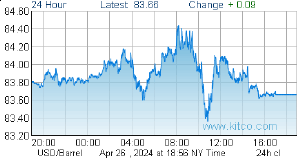July 16, 2010 (re-post)
It’s not hard to find some pundits right now who are predicting the sky is about to fall and markets are going to crash across the board – Clive Maund is one of many who are very bearish at the moment.
At BMR, we’re seeing things quite a bit differently. In fact, we’re expecting markets will be quite robust beginning later this summer and continuing through the remainder of the year.
The last 2-and-a-half months have not been pretty. The CDNX is off 17% since the beginning of May. The Nasdaq is down 11.5%, the Dow has declined 8% and the TSX has fallen 5.2%.
As far as the CDNX is concerned, our contention is that the weakness we’ve seen since early May is merely a correction within an ongoing bull market. Rising 200 and 300-day moving averages support this view. If we were on the verge of a major crash in all markets, as witnessed in 2008, the CDNX would be leading the way on the downside in very serious fashion as it did in July and August of ’08. The CDNX has simply not broken down from its primary trend and has proven to be a very reliable leading indicator of the direction of the major markets and even the economy.
Today’s action was very encouraging. Despite major weakness in Gold and commodites, and large declines in both New York and Toronto, the CDNX fell just 7 points to 1380. This shows resiliency and perhaps also demonstrates the CDNX decline since early May has now largely exhausted itself.
Historically, there is a very interesting and perhaps significant comparison between the CDNX 2010 chart and the 2004 market. We believe a repeat of 2004 is very possible which means now is the time to be a buyer and embrace this current weakness in advance of what could be a very strong move to the upside beginning in earnest within a month or two. John, BMR’s technical analyst, takes a detailed look at the similarities between 2004 and 2010 in his very astute analysis below the two charts we’ve posted.
In each year the 50 and 100-day SMA’s (simple moving averages) both started to decline in the month of May. In late July of 2004, the CDNX bottomed at about 6% below its rising 300-day SMA. Its 100-day SMA reversed to the upside in late September and the market finished the year above 1800 for a 26% move from the July bottom.
Moving ahead to where we’re at now, one cannot rule out the possibility of one final plunge or shakeout in the CDNX, perhaps to about 1300, though it’s equally possible the recent low of 1343 will hold. The main point to understand is that now is more than likely a good time to be accumulating quality junior resource stocks – ones with excellent projects, strong balance sheets and superior management. Don’t forget also that Gold is approaching a seasonally strong period and could really begin to take off come late summer/early fall. Given that U.S. mid-term elections are coming up, Obama and the Democrats can be expected to try everything they can to grease the wheels of the U.S. economy to maintain their control in Congress. China growth has slowed but is still robust. Corporate earnings are showing strength and that should help to underpin the market.
Below, John examines the comparison between the CDNX in 2004 and the CDNX so far in 2010 – the similarities are incredible:
CDNX chart for 2004 (left) beside CDNX chart for 2010 (right):
John: The whole basis of technical analysis is that chart patterns are repetitive. Time and time again we have seen if the required criteria are met, the patterns will produce the same results most of the time. Nothing works 100% of the time.
Today we are going to look at not only chart patterns but we are going to integrate them with seasonal effects with respect to the CDNX Index. We are going to compare the CDNX chart for 2004 with that of 2010 to perhaps get an insight into what we may expect for the remainder of the year.
Now in order to get a meaningful comparison we have to eliminate the daily and weekly trading “noise” and look at the charts in terms of horizontal and sloping trend channels.
First, let us compare the charts for the period January through April. We see that both charts have 2 horizontal channels at different levels with the Index peaks occuring in March for 2004 and April for 2010.
Each one then has a downsloping channel (downtrend) from the latter part of April to around the middle of May. Both charts then have the Index in a horizontal channel from sometime in May to July at which point the Index drops into a lower horizontal channel. That is where we are now.
Thus, we can see that the Index behavior this year is very similar to that of 2004.
Looking at the indicators, we see that for both charts at this time the RSI is low at 25%. The Slow Stochastics has bottomed out at an extremely low value and the Directional Movement Indicator shows the -DI (blue line) is very high – between 50 and 60 and this peak in 2004 was the Index’s low point for the year. We probably have seen the low for this year, too.
The outlook for the CDNX for the remainder of this year is very bullish. I fully expect that within the July/mid-August period we will see the start of a bullish move to the upside in a similar manner to that of 2004.
 BullMarketRun.ca
BullMarketRun.ca










